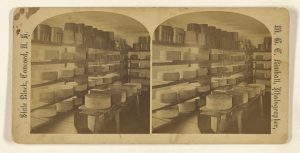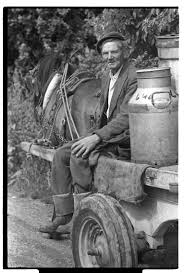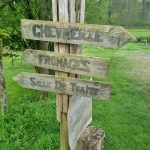To understand how to make cheese, it may be a good idea to see how cheese was first made. The first cheese was probably not designed but happened by accident. Cheese may have originated from a bowl of raw milk left on a table for a few days, and as it curdled, the flavour and texture of the milk would have changed. The curds may have been drained in cloth, the remaining curds then salted and then eaten fresh. A more scientific view looks at the first cheeses based on the history of making cheese was discovered by the Neolithic peoples around 8000 BCE. Around this time, humans were transitioning from hunter/gatherers to agriculture and food production. They domesticated animals and cultivated cereal grains. They used hand axes and adzes for ploughing and tilling the land and started to settle on the land instead of roaming. According to one ancient legend, cheese was made accidentally by an Arabian sheep or goat herder who stored his supply of goat milk in a pouch made from a sheep or a goat’s stomach. Cows were not widely milked in this era. Cows were most likely wild or undomesticated Auroch and later domesticated into Yaks and Zebu. The sheep or goat pouch would have contained a natural enzyme called chymosin. Chymosin is the technical term for rennet, used in modern cheesemaking. As it was in the desert, it was quite hot, and being raw milk there were lots of natural bacteria in the milk, and as the stomach was lined with natural rennet, the milk started to acidify and curdle, then separate into curds and whey. We now have the four basic tenets of making cheese: milk, heat, bacteria, and rennet. 8,000 years ago, they may have drained the whey as a drink, added some salt to the curds, and now you have cheese.
Although it is not really certain where and when cheese production was first discovered, evidence of early cheesemaking is prevalent in the Middle East, Europe, and Central Asia. The word cheese comes from the Latin word caseus, the root of which is traced back to the proto-Indo-European root kwat, meaning to ferment or become sour. Let’s now dive deeper into the history of making cheese

As cheesemaking spread to the cooler climates of Northern Europe, salt was a valuable commodity so it was not widely used for preservation (or flavouring) cheese. But if you lived near the ocean, seawater which is around 3.5% salt was commonly used to brine salt the cheese. This leads to a creamier, milder variety of cheese. These cooler climates also saw the invention of aged, ripened, and blue cheeses. Many of the cheeses that we are familiar with today (Swiss styles, Edam and Gouda, Brie de Meux, Epoisse, Comté and harder Italian styles) were first produced in Europe during the Middle Ages. Many commercial names of cheese originate from this era eg Cheddar in 1500 A.D. and Parmesan in 1597 A.D.
In Australia in 1788, when Captain Arthur Phillip and the first fleets came ashore at Sydney Cove, they had seven cows and two bulls. They were selected to survive a hostile environment, but with a lack of adequate fencing, this small herd ‘escaped‘ to the greener pastures of what is now Parramatta, where they were not to be seen for several years.

Upon their recapture, the herd comprised 61 cattle. The cows of this group became Australia’s first dairy herd. By 1800, through breeding and importing, there were 332 bulls and 712 cows in the colony. The settlers were adapting to their new Australian environment. They made cream, butter and cheese during spring and summer (when cows produce most milk) and preserved these commodities with salt for autumn and winter.

Pioneers such as John Macarthur imported dairy cattle to his Parramatta farm while, in 1805, Dr John Harris built Sydney’s first commercial dairy at what is now inner suburban Ultimo. However, Tasmania was the first state to start making cheese commercially. In the 1820s, the Van Diemen’s Land Company established Australia’s first commercial cheese factory. Farmers from the NSW district of Illawarra began to send their cream, cheese and butter to Sydney markets by river, and as more ports opened, dairying extended all the way down to Bega.

In 1891, there were almost 1 million dairy cows in Australia. The gold rush brought thousands of people to Australia. With its collapse, many were offered Government pastoral leases on the outskirts of inland towns. By 1900, there was hardly a township, even in remote outback Australia, that did not have its own fresh milk.
Up until 2000, Australia’s dairy industry was regulated by state governments to ensure a year-round supply of drinking milk for consumers that met a set of state based standards. The regulations meant state governments controlled the drinking milk market, including volume and price, while the Commonwealth supported the farmgate price of ‘manufacturing milk’ used in bulk products like powdered milk. Though each state differed slightly, local dairies sold their milk to local dairy processors at a price set by the states. Do you now understand the history of making cheese?



